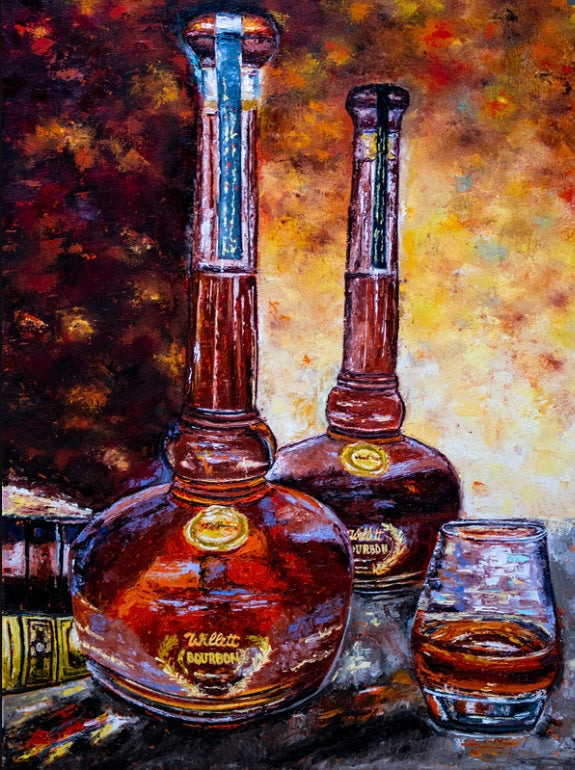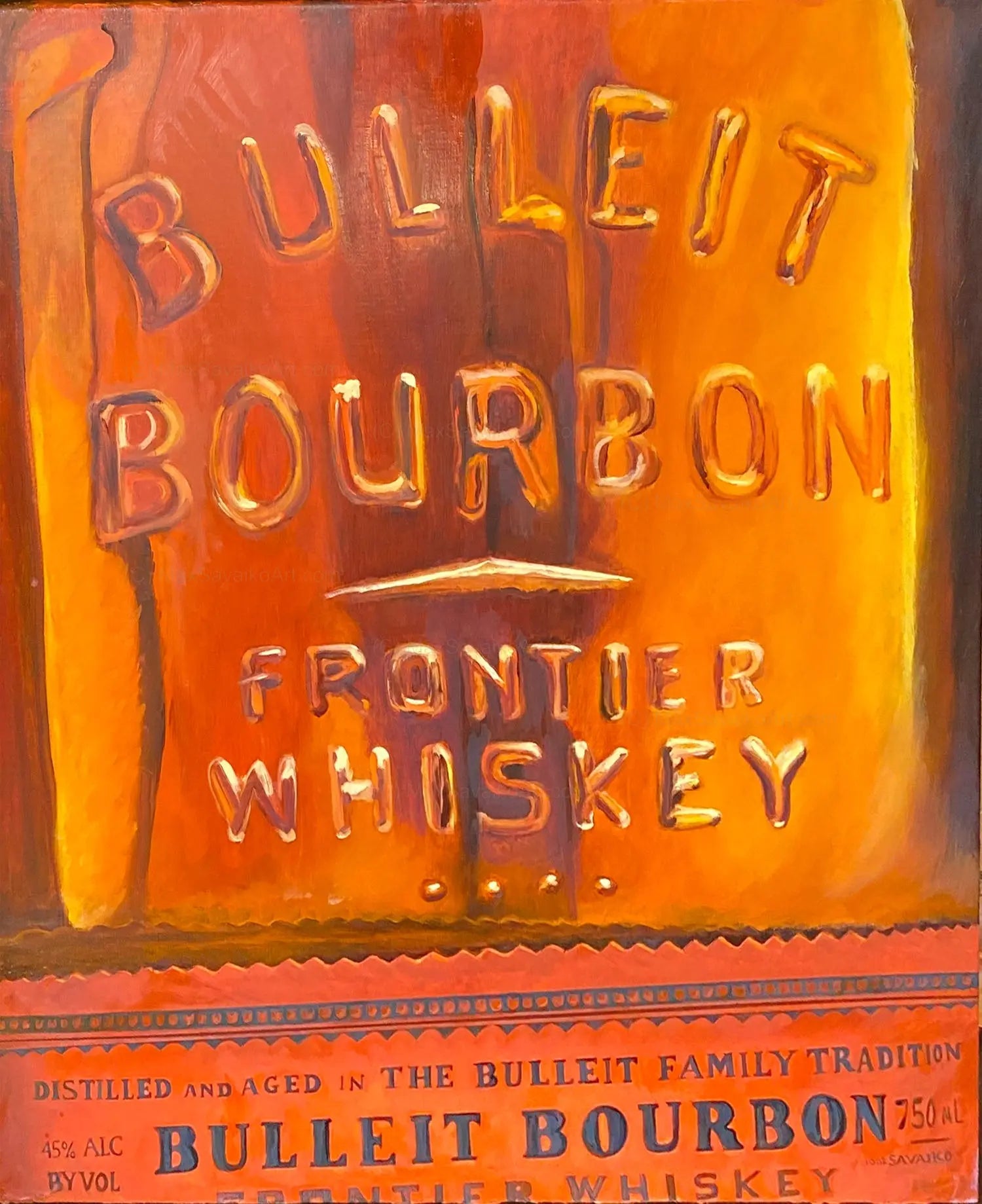Revealing the Beauty of Bourbon Art: A Homage to Craft Distillers
Revealing the Beauty of Bourbon Art: A Homage to Craft Distillers
Blog Article
The Importance of Whiskey Art in Celebrating Heritage and Workmanship in the Beverage Industry
The detailed connection in between bourbon art and the event of heritage and craftsmanship within the drink industry can not be overstated. With thoughtfully created labels and bottles, scotch brands encapsulate their historic roots and the artisanal abilities that specify their manufacturing approaches. This creative dimension not just enhances market allure yet additionally acts as a conduit for cultural storytelling, promoting a deeper link between the craft and the consumer. As we discover the numerous aspects of this subject, fascinating concerns regarding the influence of modern trends on traditional practices develop, triggering additional examination.
The Historical Roots of Whiskey
At the heart of bourbon's allure exists a rich tapestry of historic origins that trace back to old people. The beginnings of scotch can be connected to the distillation practices of the Sumerians and Babylonians around 2000 BCE, where very early forms of fermented grain drinks began to arise. It was in the Middle Ages that the art of purification advanced considerably, especially in Ireland and Scotland, leading to the production of bourbon as we recognize it today.
The term "bourbon" itself stems from the Gaelic word "uisce beatha," indicating "water of life." This phrase highlights the cultural relevance of bourbon in Celtic cultures, where it was usually connected with routines, parties, and communal bonding. By the 15th century, distillation came to be an identified craft within reclusive communities, paving the way for the facility of lawful distilleries.
As profession paths increased, bourbon's popularity expanded, going beyond regional boundaries and recording the rate of interest of lovers worldwide. Realism Art. This historic trip shows not just the workmanship behind scotch manufacturing but also its indispensable function in social and social contexts, marking it as a substantial drink throughout history
Artistic Expression in Branding
Scotch branding stands as an engaging crossway of creativity and commerce, where aesthetic identification plays an important function fit consumer assumption. The looks of bourbon tags, packaging, and marketing materials mirror not just the brand name's story but likewise its core worths and heritage. Via creative expression, distilleries communicate a narrative that reverberates with customers, evoking feelings and sparking links.
Using shade, typography, and imagery in branding serves to distinguish items in a saturated market. As an example, traditional themes might evoke a sense of credibility and workmanship, while modern layouts can signify innovation and forward-thinking. This calculated artistic direction enhances brand name acknowledgment and commitment, allowing customers to create a personal connection with the scotch they choose.
Additionally, creative expression in branding typically acts as a party of local heritage. Distilleries frequently include local signs or historical referrals right into their designs, producing a feeling of location that welcomes consumers to take part in a more comprehensive social experience. Eventually, the virtuosity behind scotch branding not only boosts aesthetic appeal however also improves the total narrative of the brand, cultivating a deeper gratitude for the craftsmanship and heritage ingrained in each container.
Workmanship in Bottle Style
The artistry evident in whiskey branding prolongs beyond aesthetic identification to encompass the workmanship associated with bottle layout. Each container acts as a vessel not simply for the spirit within, however also for the story it informs about its practice, top quality, and origin. The layout procedure requires precise attention to detail, as aspects find out here such as shape, material, and closure contribute significantly to the general understanding of the whiskey.
Workmanship in bottle style includes choosing top notch glass that can improve the whiskey's color and clearness, while likewise offering a responsive experience for the consumer. The silhouette of the container should be both practical and visually appealing, commonly reflecting the heritage of the brand. Numerous distilleries opt for unique forms or embossed logo designs that stimulate a feeling of authenticity and history.
Furthermore, the label design and typography play a critical role in interacting the brand name's story. Bourbon Art. A well-crafted container not only mesmerizes the consumer's eye but also enhances the brand's dedication to quality and custom. By doing this, the craftsmanship of container layout becomes a crucial facet of the scotch experience, combining artistry with an extensive regard for heritage
Cultural Significance of Whiskey Art
Commemorating tradition and workmanship, the social value of scotch art transcends mere aesthetic appeals, intertwining with the historic and social narratives of the regions where it stems. Each container works as a canvas, depicting the special stories, mythology, and customs that have formed regional whiskey-making practices. The detailed layouts frequently reflect the heritage of the distillers, incorporating signs and themes that resonate with the society and worths of their communities.

Additionally, scotch art plays an important duty in communal gatherings and celebrations, offering as a concrete link in between individuals and their shared experiences. By appreciating the virtuosity in whiskey packaging, consumers cultivate a much deeper understanding and respect for the craft, ultimately enhancing their enjoyment of the beverage itself.
Modern Trends in Scotch Presentation
Over the last few years, the presentation of bourbon has advanced to reflect contemporary tastes and trends while still honoring typical workmanship - Realism Art. Distilleries are increasingly concentrating on aesthetic aspects that improve the general alcohol consumption experience, connecting the space between heritage and modernity
Cutting-edge bottle layouts have actually emerged, usually integrating lasting materials and artistic tags that tell engaging tales. Several brands now work together with local artists, instilling their items with special visual expressions that resonate with customers. In addition, limited-edition releases are typically packaged in collectible containers, including value and charm for connoisseurs.

Conclusion
In conclusion, scotch art offers as a crucial channel for revealing the heritage and workmanship fundamental in the drink market. Via elaborate branding, Clicking Here innovative bottle designs, and culturally considerable imaginative elements, scotch brands effectively honor their traditions and connect with customers.


Craftsmanship in bottle layout includes choosing premium glass that can improve the bourbon's color and clarity, while likewise giving a responsive experience for the consumer. In this method, the craftsmanship of container design ends up being an essential facet of the whiskey experience, combining virtuosity with an extensive respect for heritage.
In final thought, bourbon art serves as an essential channel for sharing the heritage and craftsmanship fundamental in the beverage industry.
Report this page